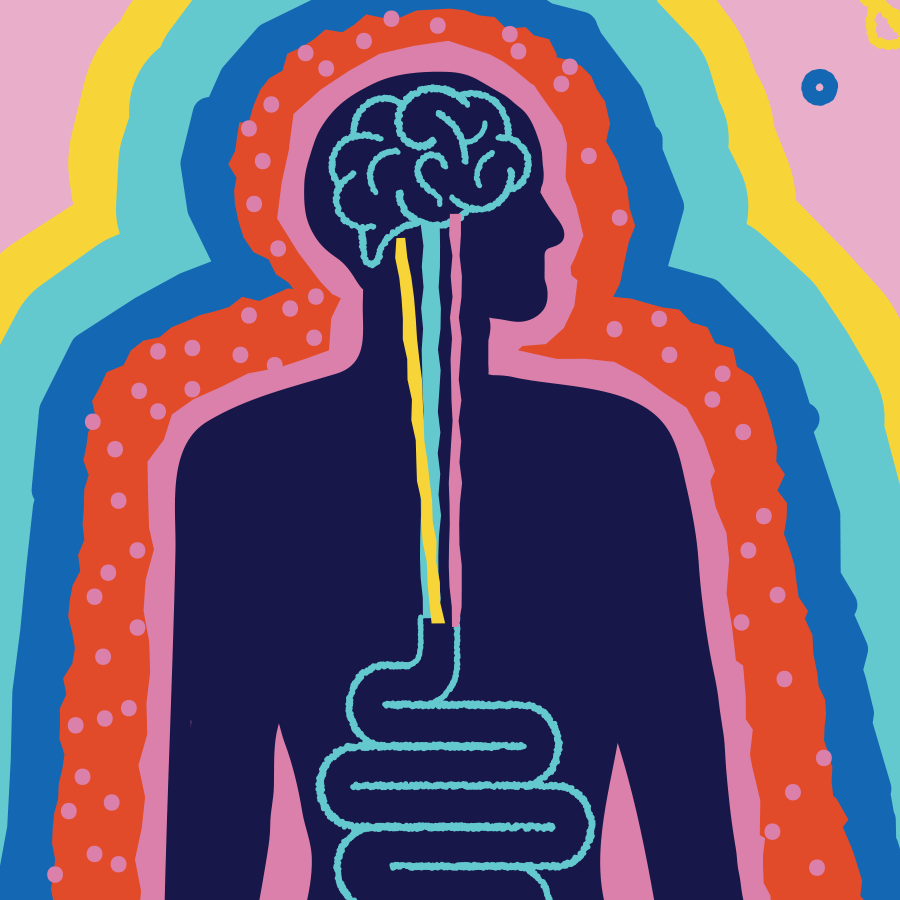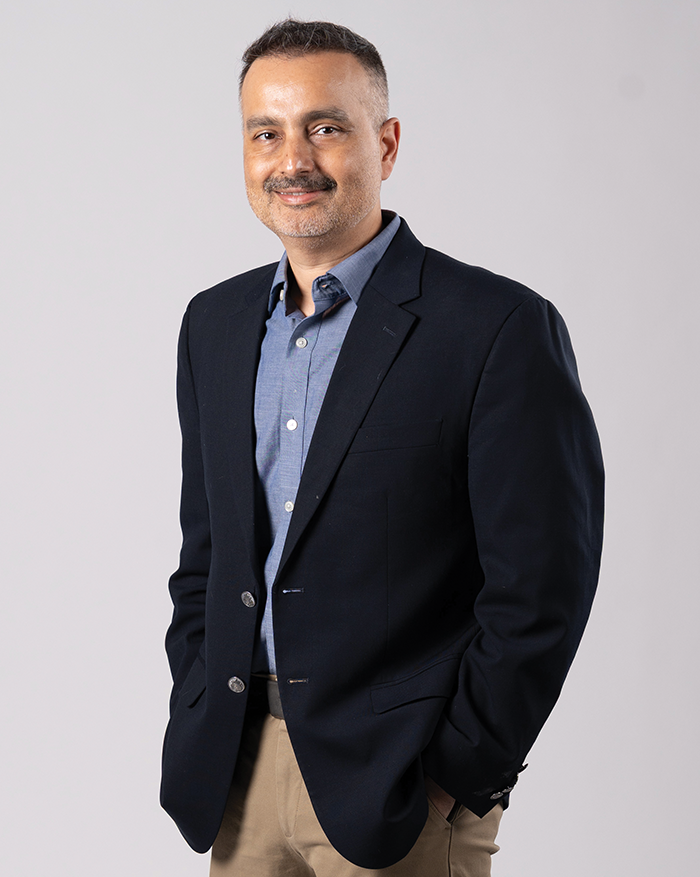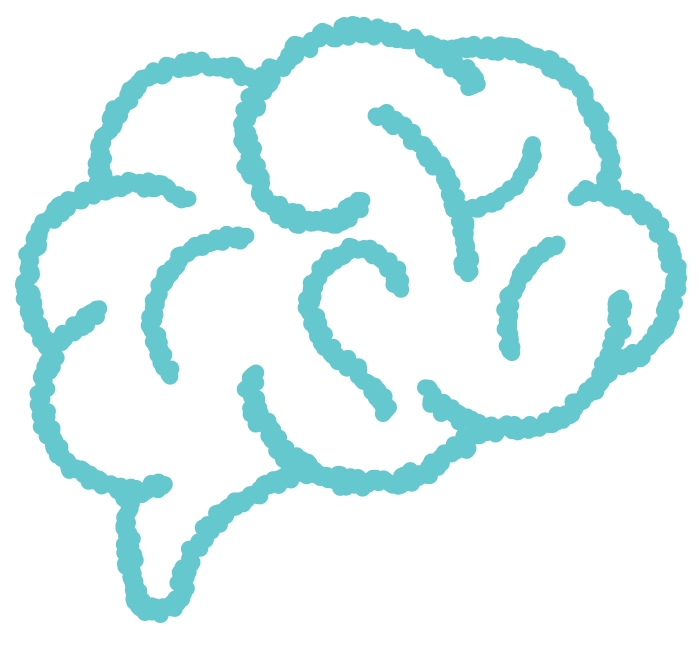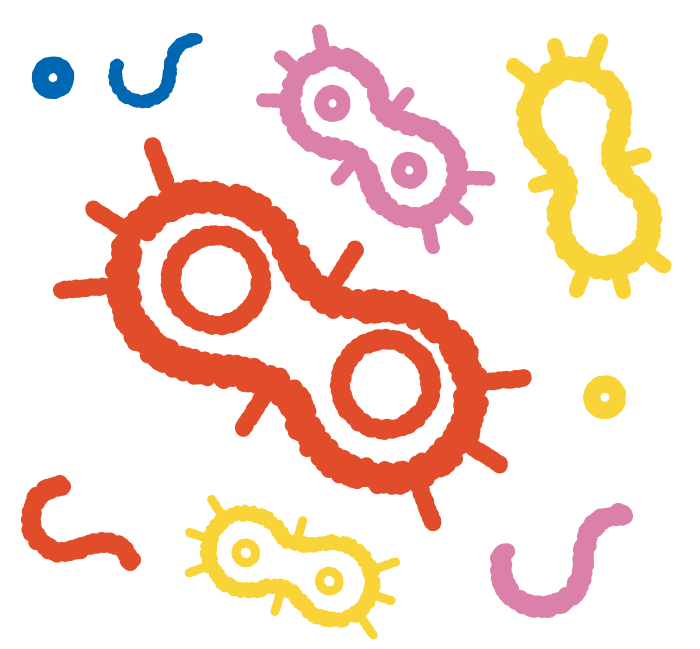
Health & Medicine
A dose of someone else’s medicine
For patients who face disabling, even brain-damaging effects of chronic liver disease, VCU gastroenterologist Jasmohan Bajaj, M.D., reveals the promise of an ancient and increasingly accepted medicine: microbes harvested from the poop of others.
“With great power comes great responsibility,” says Jasmohan Bajaj, M.D., echoing wisdom that’s been applied by prophets, statesmen and comic book writers.
But while they’ve used it to probe morality and the obligations of one human to another, Bajaj is referring to poop.
He’s seen what it can do.
It’s human poop — medical-grade human poop — that comes from select donors and is screened six ways to Sunday before its microbial denizens are isolated and cleaned, then transplanted into the intestines of a person who is sick. In the case of Bajaj’s work, they are gravely ill. They’re also, he says, “people who get part of their life back because of this.”
Bajaj is a gastroenterologist at the VCU School of Medicine’s Stravitz-Sanyal Institute for Liver Disease and Metabolic Health and for the Central Virginia Veterans Affairs Health Care System. Most of his patients have cirrhosis of the liver, the progressive scarring that chokes the organ and hampers its ability to filter blood, and is the hallmark of late-stage chronic liver disease. It can be caused by long-term alcohol use, obesity and viral hepatitis, among other things, and it’s an area of mounting concern: in the U.S., deaths caused by cirrhosis increased by more than 75% between 2000 and 2019, rising from 27,000 to nearly 48,000.
With toxins amok in the bloodstream, some of these people find themselves at the crossroads of spiraling disability and experimental poop therapy.
The idea behind fecal microbiota transplant, or FMT, is to deliver a cavalry of donated microbes that will restore balance to an ecosystem in the gut that’s become lopsided and hostile. In 2013, the U.S. Food and Drug Administration eased restrictions to allow use of the procedure to treat people infected with the bacterium Clostridioides difficile, a potentially life-threatening condition that causes diarrhea and colon inflammation, only after the infection doesn’t respond to conventional therapies.
Since then, FMT has become the standard treatment for recurrent C. difficile, and since 2022, two options have been granted FDA approval to treat or prevent repeat infections. Hundreds of studies have been launched in all directions to map just how far the benefits might extend and to locate pitfalls: In 2019, two patients in FMT trials became severely ill, and one died, leading the FDA to issue a nationwide safety warning and tighten its screening protocols for clinical trials.
Much of the exploration has been within the neighborhood of the gut, testing FMT for use in disorders including ulcerative colitis, Crohn’s disease, diabetes, irritable bowel syndrome, obesity, chronic constipation and malnutrition. Because the parts of a body are not distant islands but one wildly interconnected mass — a “symphony between the organs,” Bajaj says — studies have ventured far beyond the bowel to the effects of FMT on cancers, HIV, eczema, alopecia, psoriatic arthritis, chronic fatigue syndrome, insomnia, nasal allergies and more.
Still further afield, at the body’s most skyward outpost, researchers are exploring FMT’s effects on autism spectrum disorder, Parkinson’s disease and major depressive disorder. And this is where Bajaj’s work in the gut is targeted, as well: the brain, and even the mind.

Jasmohan Bajaj, M.D. “When you talk about the gut-brain axis, you talk about fixing the gut so that the brain gets better.” — Photo by Jud Froelich (M.S.’21)
The enemy within
The gut and the brain are connected by more than 100 million neurons, a river of chemical signals and an ecosystem of gut microbes numbering in the trillions, which help operate the body’s 15 feet or so of labyrinthine intestinal tubing. The connection is an ever-ringing hotline, known as the gut-brain axis, linking two of the body’s big business districts. (The Cleveland Clinic, on its website, goes as far as saying that “your brain and your gut are like besties. They talk about all kinds of things, from practical, physical matters to emotional ones.”)
“When you talk about the gut-brain axis, you talk about fixing the gut so that the brain gets better,” Bajaj says. “The finest example of that in human beings is hepatic encephalopathy,” and it’s a major focus of his research.
Hepatic encephalopathy is the loss of brain function that happens when the liver — perhaps the gut’s other bestie, with which it forms another crucial axis — can no longer do its job neutralizing toxins in the blood. It’s a common and debilitating complication of cirrhosis.
“Someone who is in this disease process, who is used to being independent their entire life — financially able to take care of themselves, able to drive — all of those things go away very quickly,” Bajaj says. “Suddenly you’re at the mercy of everyone else.”
In this state, “the gut basically becomes your enemy,” he says. Even before liver damage is visible, the gut microbiome — a community of hundreds of species, mostly bacteria but also viruses, fungi and archaea — has been tilted into disarray, which then worsens the disease. And without a working liver to filter the routine but toxic byproducts of the microbes like ammonia, “it’s a free-for-all,” he says. “These products go unchallenged to the poor, unsuspecting brain.”
That causes symptoms including confusion and mood changes. It can even put someone into a coma. If that happens, short of a liver transplant, there’s one toxin-removing fix: “The only thing that wakes them up is having gigantic bowel movements,” Bajaj says.
It’s a laxative-induced turnabout so profound that he compares it to the biblical tale of Lazarus, whom Jesus raised from the dead.
“Nothing else comes even close to this when you talk about the gut-brain axis in action,” Bajaj says.
This is an immediate fix, but not a sustainable one. Studies have shown that patients face a better than 20% chance of recurring episodes of hepatic encephalopathy, even while on one or both of the available treatments, and as high as 57% without them. Those drugs — a laxative and an antibiotic — help lower ammonia levels, but a recurrence also can be triggered by even mundane insults, like infections, constipation or dehydration. Often patients have decades’ worth of injury to the liver, Bajaj says, “and suddenly the liver says, ‘I’ve had enough.’” After hepatic encephalopathy, according to one study, the odds of surviving a year were 44%, and shrank to 29% for three years.
“The important thing is: Time is brain,” Bajaj says. “The more times that people end up being in this comatose situation, the more brain function is lost.” Even if someone eventually receives a liver transplant, “the more cognitive deficits you have going in, the less likely you are going to recover completely. … So we have to make sure that we preserve the brain with whatever methods possible.”

Help from the ‘gods’
Although the gust of momentum behind fecal microbiota transplantation is relatively new, the practice is not. The fourth-century Chinese physician Ge Hong apparently had success prescribing a human-feces solution, taken orally, to treat food poisoning and bad diarrhea. It was “considered a medical miracle that brought patients back from the brink of death,” researchers wrote in 2012 in The American Journal of Gastroenterology.
Twelve centuries later, a book of traditional Chinese medicine listed treatments that use the same main ingredient but in an array of forms: fresh, fermented, dried and even infant-produced.
It was 1958 when the notion came to the foreground in the West, as doctors reported that four patients with a life-threatening intestinal inflammation — pseudomembranous enterocolitis, which years later was linked to C. difficile infection — had been cured by fecal enema. The idea, they wrote, was to restore the mix of bacteria that had been wiped out by antibiotics.
But the era of antibiotic discovery was still unfolding in 1958. (Penicillin became available to the U.S. public only 13 years before). And that year the FDA approved a new powerhouse called vancomycin, its name derived from “vanquish.” It became the go-to treatment for pseudomembranous enterocolitis and C. difficile infection, in general.
Scientists have come to understand, though, that antibiotics can lead to a cycle of reinfection: They tend to make collateral damage in the gut, ham-handedly killing helpful bacteria along with the rogues. That leaves opportunities for the likes of C. difficile to move in unchecked. In fact, that germ — which spreads through contact with feces — most often affects people during or after use of an antibiotic. As recently as 2017, C. difficile was still estimated to infect more than 450,000 people in the U.S. annually and kill 30,000. Between 20% and 35% will have recurrent infections.
“After a number of these cycles, their microbiome becomes just decimated,” says gastroenterologist Alexander Khoruts, M.D., a professor of medicine at the University of Minnesota and director of its Microbiota Therapeutics Program, which manufactures FMT treatments for C. difficile patients and for clinical trials, including some of Bajaj’s studies.
In 2010, Khoruts and his colleagues reported on a fecal microbiota transplant they’d done via colonoscopy two years before, which did more than clear a patient’s C. difficile infection: It stuck around and remade the patient’s gut microbiome to resemble that of the donor.
Khoruts helped coin the term “fecal microbiota transplant,” although he’s since lobbied to change it — first to “intestinal microbiota transplant,” which he says failed to catch on, and now “microbiota transplant therapy,” which is getting more traction. “I never liked the f-word,” he says, “because I thought: This is not a good word for fundraising and, in general, not for patients.”
The product itself has come a very long way. In treating that patient from his 2010 case report, Khoruts says the donor was the patient’s husband “and I just threw a turd into a blender ... . That was it; that was the preparation. It’s highly impractical. And really disgusting.”
The treatments he manufactures now are far more refined.
Donors are unsullied by disease, medications and allergies. “I call them Greek gods,” Khoruts says. They undergo screening questions, physical exams, blood work and COVID tests. And they must donate at a designated bathroom in the research clinic to “maintain the chain of custody.” Microbes eventually are separated from the rest of the fecal matter and kept frozen, and themselves tested for safety.
Some clinical trials use microbes from Khoruts’ lab in a liquid suspension for enemas, but the majority use the lab’s freeze-dried microbes, he says. They’re in the form of a tasteless, odorless powder that’s put into capsules and taken orally. For studies in which swallowing a pill might be an issue, the powder can even be steeped from a sachet into, say, a glass of milk.
Bajaj and Khoruts, in a journal article co-written in 2020, have called FMT “the first true member of an entirely new class of therapeutics.” It’s a class that challenges scientists, doctors and the public to more fully understand the roles and vulnerabilities of the body’s microbial communities, that challenges us to not peg gut microbes as simply “good” ones or “bad,” but as necessary parts of a whole.

Focus on the constellation, not just one star
“This is not a magic bullet — at all,” Bajaj says. Even if it were, his studies aren’t yet tuned for the general population under daily life; they involve “very curated patients, under very curated protocols.” And while he’s pulled forward by the promise of FMT, he knows the paths he seeks are more involved than routing C. difficile.
“It’s scary and it’s exciting,” he says. “There’s often a temptation to include people who are not as sick. But that’s not where the concern is; those are not the people who are suffering the most. That’s why we only included people in whom we had exhausted standard of care, in that you can look over the edge and if something happens — your therapy either doesn’t work or is potentially even harmful — in your mind you have made peace … [knowing] we did everything we could for this patient.”
Bajaj had been studying hepatic encephalopathy for years from a variety of angles, all among people with cirrhosis. But he tightened the focus to FMT in 2016, after he reported a link between hepatic encephalopathy and the bacteria found in patients’ intestines and stool. Since then, he’s worked to establish whether and how FMT might be a viable treatment for those highly at-risk patients: Is it safe? Does it matter what’s in the recipient’s gut already? How many doses are needed? And does it matter how they’re given?
Earlier this year he published results from the largest study to date on the tolerability and effects of FMT on people who have cirrhosis and a history of hepatic encephalopathy. All 60 participants were using the standard laxative and antibiotic treatments and were split among four groups that received three FMT treatments, three placebos or combinations of both.
After six months, Bajaj, Khoruts and their colleagues found that the placebo group fared the worst: Their hepatic encephalopathy came back at a rate of 40%, compared with 9% among the groups that received FMT, even if just one dose.
They found that higher counts of the bacterium Lachnospiraceae in the recipient’s gut helped the FMT take root. And FMT proved equally successful whether given as a pill or an enema, which was a relief to Bajaj. “It’s pretty hard to convince people to get multiple [enemas] — that’s just not sustainable, even for this population.”
He’s planning a larger, multicenter follow-up study to further test the treatment, now using only FMT capsules.
The pills are also being used in a new study in a different realm of the gut-brain axis: to test the safety and efficacy of FMT to curb alcohol consumption. It’s a scaled-up version of a small study of 20 men with alcohol-related liver disease and cirrhosis that Bajaj and others published in 2020.
The men had tried rehab and medications to curtail their drinking, but without success, Bajaj says, despite it having caused major organ damage. “These are patients who have been often neglected, made fun of, not been taken seriously or ignored because ‘He’s a drunk,’ or ‘She’s a drunk,’ or ‘She’s not taking herself seriously,’” Bajaj says. “Changing that conversation to ‘It is a medical disease that needs a medical answer’ — that in itself is so cathartic to some of our patients.”
Not only was the FMT safe, but the study found that nine of the 10 who received FMT, via enema, reported lower alcohol cravings two weeks after treatment, compared with three out of 10 who received a placebo. Six months after treatment, there had been one alcohol-related hospitalization among the FMT group and seven in the other.
In 2022, the craving result was replicated in mice that had been implanted with stool samples from the men in the study. Those researchers, led by Bajaj and Jennifer Wolstenholme, Ph.D. (Ph.D.’09), the director of the Rodent Behavioral Core at VCU’s Alcohol Research Center, transplanted either the men’s pre-FMT treatment stool samples, post-treatment samples, or nothing (for control purposes) into germ-free mice. When offered access to both an alcohol-water solution and plain water, they found that although the mice drank similar amounts of liquid in total, the mice given the post-FMT treatment samples drank less alcohol than the mice who received pre-FMT treatment samples.
When the mice were dissected, researchers found that “the majority of the genes that actually caused this behavioral change were not in the liver, not in the brain; they were in the gut,” Bajaj says. “There was a hundred times more activation of genes in the gut.”
The study also showed that the effect was strong enough to survive two transplantations — from human to human, then human to mouse.
Bajaj and Khoruts have called FMT “the first true member of an entirely new class of therapeutics.” It’s a class that challenges scientists, doctors and the public to more fully understand the roles and vulnerabilities of the body’s microbial communities.
So far, however, FMT alone doesn’t seem to be enough to untangle such complicated issues. Bajaj points out that in testing the use of FMT for disordered drinking and for hepatic encephalopathy, study participants still continued their existing regimens of drug and behavioral therapies.
“Unless and until you have a microbial smoking gun — which none of these chronic conditions do — you can’t really, at least in my opinion, rely on the FMT carrying the heavy load,” he says. “It’s a very important supporting player, in addition to whatever you need to do.”
Perhaps for the same reason, Bajaj’s endeavors are spread more widely, looking for ways to improve patients’ prospects without FMT, too.
For instance, in a startling study last year, Bajaj and others examined Veterans Health Administration records for more than 175,000 people diagnosed with dementia and found that for more than 10% of those patients, their cognitive issues might actually be hepatic encephalopathy caused by undiagnosed cirrhosis. In those cases, the symptoms could be reversible if treated. A follow-up study of almost 70,000 non-veterans found the number could be nearly 13%.
“Horrifying,” he says of the studies’ findings, which were spurred by his experiences with two patients. “It was horrifying.”
Bajaj has found ways to use the gut microbiome for diagnostic and predictive purposes, too. Last year he helped lead a team that identified a gut-microbiome signature that could quickly rule out hepatic encephalopathy among people with both cirrhosis and cognitive issues. And in a 2021 study, he found that cirrhosis patients with higher levels of antibiotic-resistance genes in their gut bacteria were more likely to be hospitalized within three months and to die inside a year.
He also looks for ways that patients can influence their microbes without FMT, including a recent study that found swapping a single meat-based meal for a vegan or vegetarian option could help people with cirrhosis lower their toxic ammonia level.
“Our hope is to give people a menu,” Bajaj says — options to coax, nudge or strong-arm a gut microbiome into balance. “Those are really important things that I think people deserve to have that they don’t currently.”
As menus go, this one would still raise eyebrows, and questions. But also possibilities.
